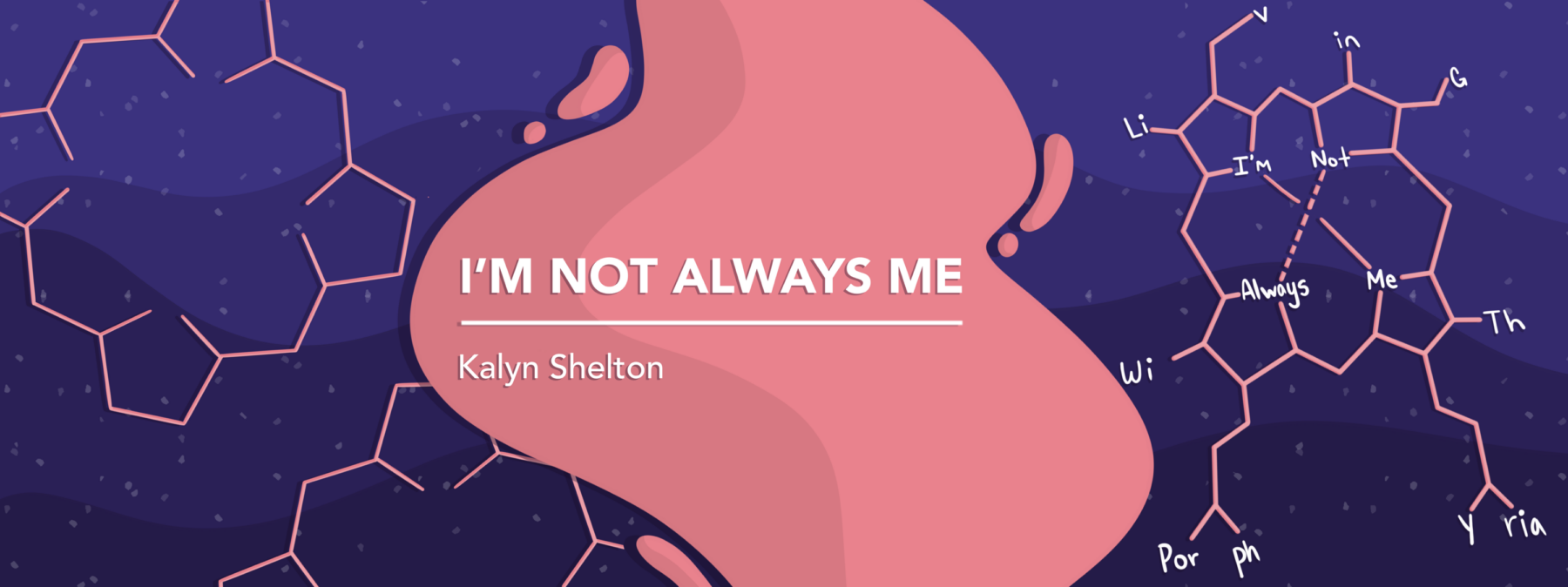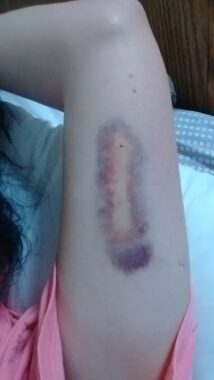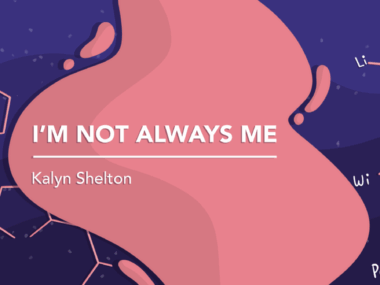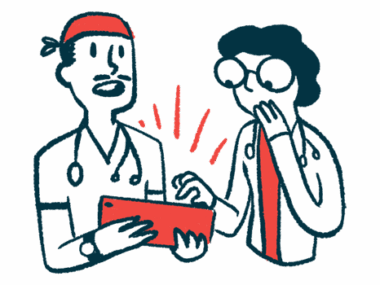Some medications have led me to ‘small’ porphyria attacks
I've learned to be cautious with treatments — or suffer the consequences
Written by |

This column describes the author’s own experiences with several medicines. Not everyone will have the same response to treatment. Consult your doctor before starting or stopping a therapy.
I was 23 and in a relationship with my eventual husband, Daniel. At the time, we weren’t ready to have a baby, so we decided that I’d start birth control. After weighing the options of pills, IUDs, and the like, I went with the Nexplanon (etonogestrel) implant, which was inserted into my left upper arm. Below is a picture of the bruise that developed after the implant was placed.

A bruise, likely from a Nexplanon implant. (Photo by Kalyn Shelton)
Nexplanon works for three years and then must be replaced. I was on Nexplanon for right at three years when I started experiencing abdominal pain, nausea, vomiting, and mood swings. My primary care provider at the time, as I explained in my previous column, put me on Prozac (fluoxetine) for mood swings and recommended a stool softener for constipation, as well as a soft diet.
Although I was constipated, that wasn’t the core issue; instead, it was but one symptom of an underlying disorder. I wish I’d known I had that disorder before starting birth control.
Exhaustion, nausea, vomiting, confusion, abdominal pain: To me, these seem to be medication side effects that I have while I’m going through a “small porphyria attack.” I call these episodes “small” because they’re typically mild and my symptoms resolve as soon as I stop the medication in question.
With any and all medications, I check to make sure I’m safe to take them with my acute intermittent porphyria (AIP). Claire Richmond, a former columnist for Porphyria News, had a similar experience; she once explained how doctors steered her away from what would be problematic drugs when she had COVID-19.
My history with medications
Keep in mind that while multiple lists of safe drugs are out there, I’ve found that not all of them are as accurate or as clear as they need to be. A list from the Welsh Medicines Advice Service, however, has saved my life a time or two. If a medication is listed there, it’s considered safe, but if it’s not listed, it’s not recommended. I’ve found that list easy to follow.
I’ve had bad reactions to several medications, including hydroxyzine, Toradol (ketorolac), Estrace (estradiol vaginal cream), Vagifem (estradiol), LoSeasonique (ethinyl estradiol, levonorgestrel), promazine, and Givlaari (givosiran). After the four years since my AIP diagnosis, I’ve learned that when I start feeling sluggish and sick, I go straight to my medications to make sure they’re safe for me. If not, I stop taking them immediately. I usually recover within a couple of days.
There have been times, though, when I haven’t been blessed to catch a problem in time. On those occasions, I’ve ended up hospitalized and treated with Panhematin (hemin for injection), which can relieve repeated attacks of AIP. All this experience has convinced me that it’s important for any person with medication allergies to take extreme caution when using unfamiliar medicine, especially if they have acute intermittent porphyria.
Note: Porphyria News is strictly a news and information website about the disease. It does not provide medical advice, diagnosis, or treatment. This content is not intended to be a substitute for professional medical advice, diagnosis, or treatment. Always seek the advice of your physician or other qualified health provider with any questions you may have regarding a medical condition. Never disregard professional medical advice or delay in seeking it because of something you have read on this website. The opinions expressed in this column are not those of Porphyria News or its parent company, Bionews, and are intended to spark discussion about issues pertaining to porphyria.







Leave a comment
Fill in the required fields to post. Your email address will not be published.